#house of oldenburg
Photo

Portrait of Anne of Denmark, Queen of England, Irleand, and Scotland as wife of James I.
#anne of denmark#17th century#17th century art#british monarchy#house of oldenburg#long live the queue
27 notes
·
View notes
Text
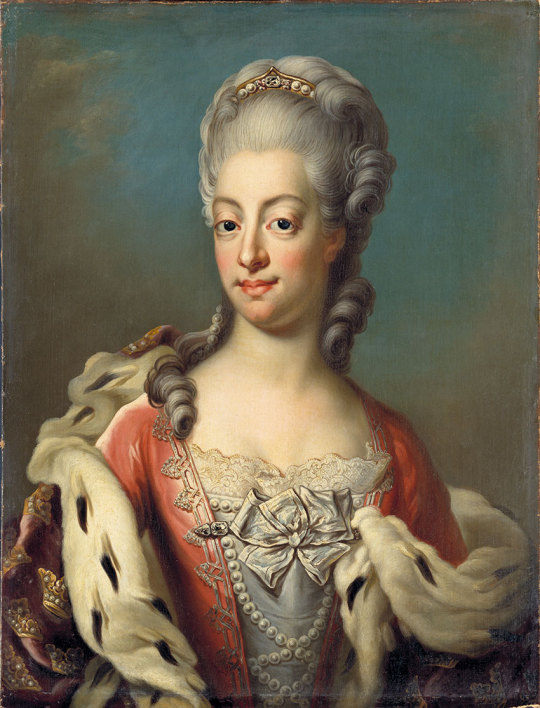
Queen Sofia Magdalena of Sweden by Jakob Björck (oil on canvas, 1788)
Sofia Magdalena of Denmark was a Danish princess who married Gustav (III) in 1766. Their marriage has been described as problematic, including because they were so different. They had two sons, the youngest of whom died at an early age.
Sofia Magdalena showed a great interest in clothing and fashion. Her exquisite dresses are preserved at the Royal Armoury. These include her wedding dress with silver bobbin lace, inspired by the French court.
Photo: Nationalmuseum
#swedish royal family#queen sofia magdalena#sophie magdalene af danmark#sophia magdalena of denmark#prinsesse sophie magdalene af danmark#princess sophia magdalena of denmark#house of oldenburg#art history#official portrait#swedish royalty#swedish history#royal history
5 notes
·
View notes
Photo
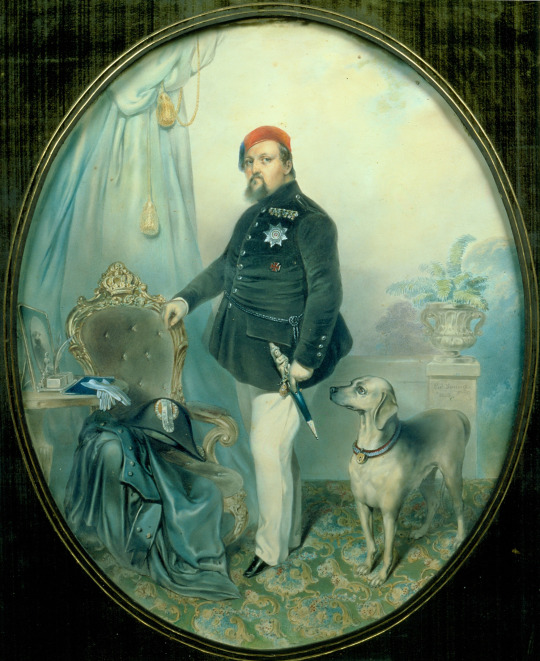
Frederick VII by Edward Young.
#kongeriget danmark#længe leve kongen#frederick vii#full length portrait#house of oldenburg#haus oldenburg#kingdom of denmark#konger af danmark#konge af denmark#oldenburg huset#full-length portrait#edward young
3 notes
·
View notes
Text
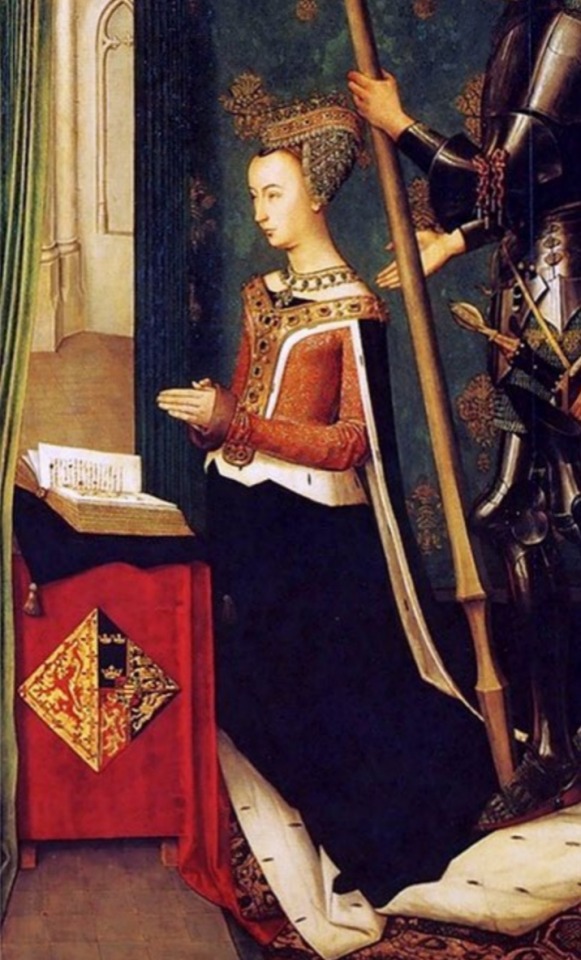
BORN ON THIS DAY:
Margaret of Denmark (23 June 1456 – 14 July 1486) was Queen of Scotland from 1469 to 1486 by marriage to King James III.
She was the daughter of Christian I, King of Denmark, Norway and Sweden, and Dorothea of Brandenburg.
0 notes
Photo

Princess Louise of Denmark and Norway (20 January 1750 – 12 January 1831) was born to Frederick V of Denmark and Louise of Great Britain. Her eldest daughter, Marie of Hesse-Kassel, was the wife of Frederick VI of Denmark.
#Louise of Denmark and Norway#Louise of Denmark#House Oldenburg#XVIII century#XIX century#people#portrait#paintings#art#arte
22 notes
·
View notes
Text

In October 1968 Claes Oldenburg and art dealer Richard Feigen quickly organized a fundraising exhibition to support the ACLU, which was defending antiwar protestors who'd been beaten and arrested in Chicago during the Democratic National Convention.
Oldenburg's idea was a quirky souvenir, but make it cobblestone-size. You know, for kids. Kids in the streets. Oldenburg said Fire Plug Souvenir — Chicago August 1968 looked like a teddy bear, but I think we can all agree those are neither eyes nor ears.
https://greg.org/archive/2023/08/26/cobblestone-sized-fire-plug-souvenir-chicago-august-1968.html
#claes oldenburg#fire plug#chicago#cobblestone-size#dust#just give me a q-tip and five minutes the auction house photographer did not say
2 notes
·
View notes
Text
Why the fuck are all of the third spaces downtown?? Suburbs is fucking shit.
#Ray Oldenburg you were so right#It's all houses and buildings everywhere#Nothing in walking distance besides the fucking movie theatre
0 notes
Text






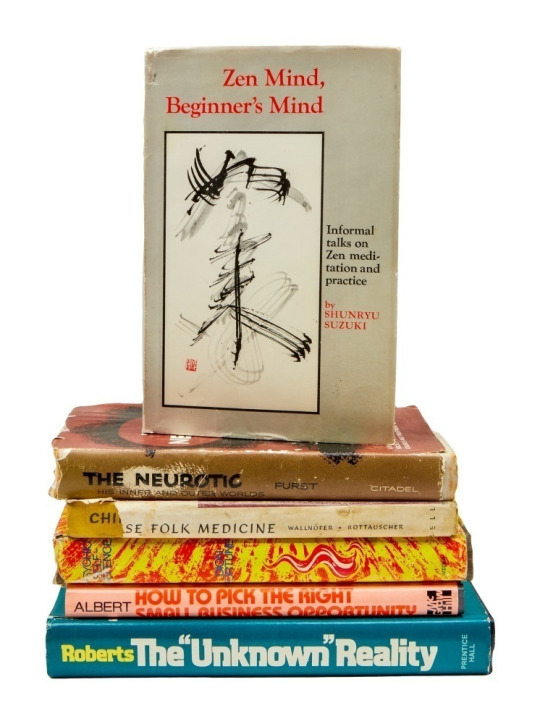
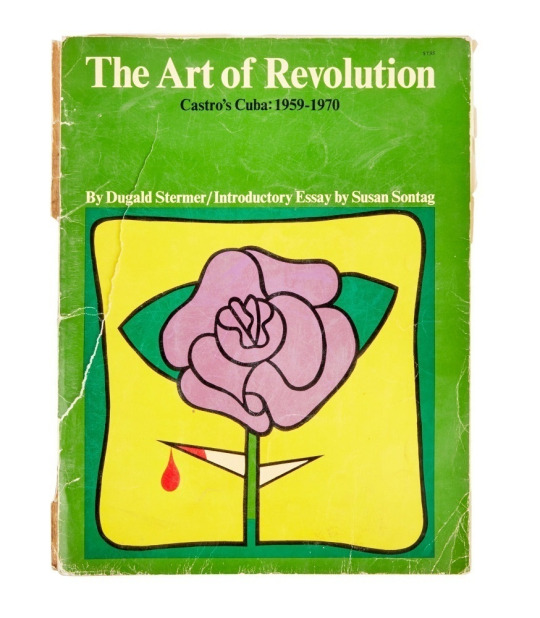
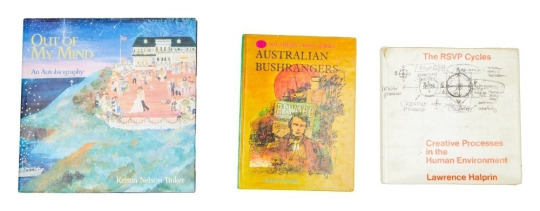



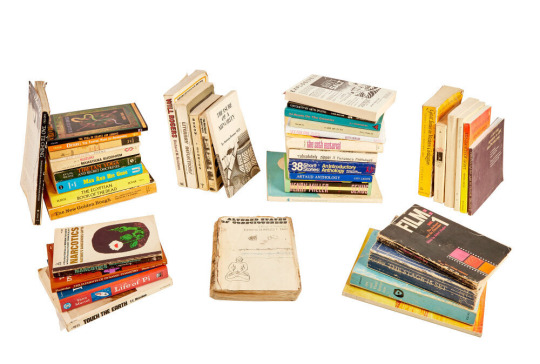
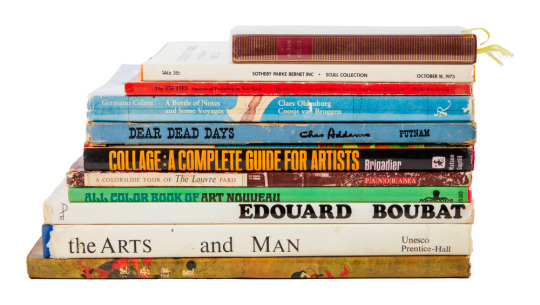

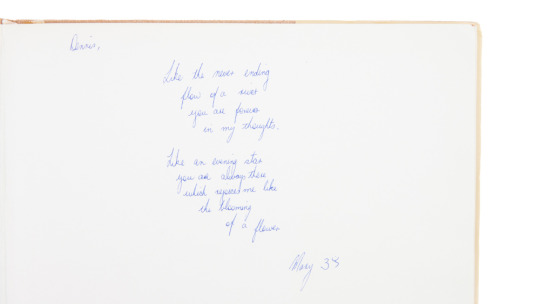
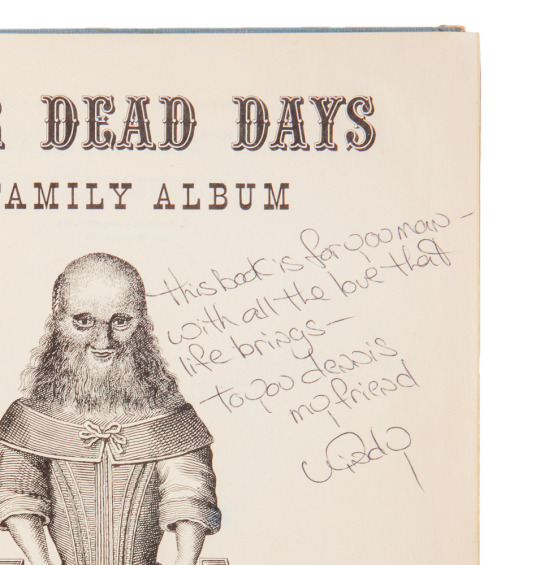
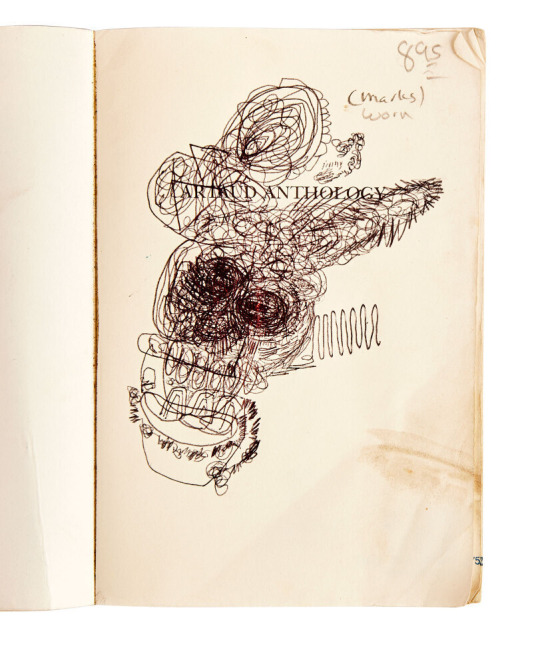
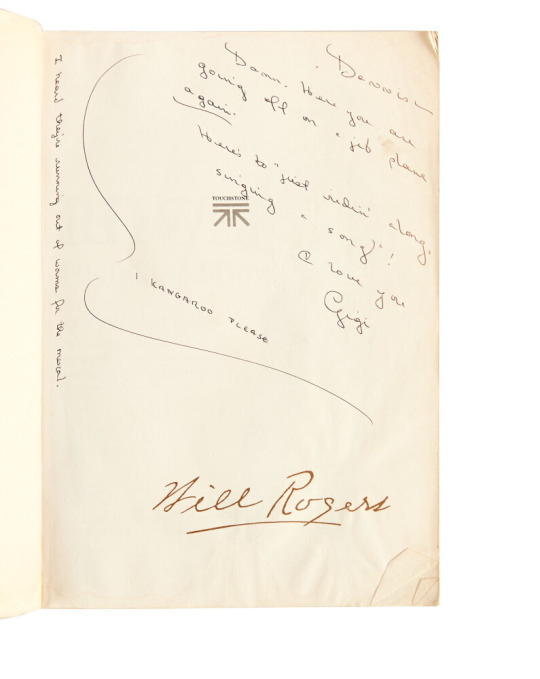
Dennis Hopper's collection of owned and gifted books
(a few are listed under the cut)
Islands in the Stream (Charles Scribner's Sons, 1970)
Magic (Delacorte Press, 1976)
Sneaky People (Simon and Schuster, 1975)
Strange Peaches (Harper's Magazine Press, 1972)
I Didn't Know I Would Live So Long (Charles Scribner's Sons, 1973)
Baby Breakdown (The Bobbs-Merrill Company, Inc., 1970)
37 (Holt, Rinehart and Winston, 1970)
Presences: A Text for Marisol (Charles Scribner's Sons, 1970)
Little Prayers for Little Lips, The Book of Tao, The Bhagavadgita or The Song Divine, and Gems and Their Occult Power.
Lolita (G.P. Putnam's Sons, 1955)
The Dramas of Kansas (John F. Higgins, 1915)
Joy of Cooking (The Bobbs-Merrill Company, 1974)
The Neurotic: His Inner and Outer Worlds (First edition, Citadel Press, 1954)
Out of My Mind: An Autobiography (Harry N. Abrams, Inc., 1997)
The Savage Mind (University of Chicago Press, 1966)
Alive: The Story of the Andes Survivors (J.B. Lippincott Company, 1974)
The Documents of 20th Century Art: Dialogues with Marcel Duchamp (Viking Press, 1971)
The Portable Dorothy Parker, A Portrait of the Artist as a Young Man, I Ching, and How to Make Love to a Man.
John Steinbeck's East of Eden (Bantam, 1962)
James Dean: The Mutant King (Straight Arrow Books, 1974) by David Dalton
The Moviegoer (The Noonday Press, 1971)
Erections, Ejaculations, Exhibitions and General Tales of Ordinary Madness (City Light Books, 1974)
Narcotics Nature's Dangerous Gifts (A Delta Book, 1973)
The Egyptian Book of the Dead (Dover Publications, 1967)
Tibetan Yoga and Secret Doctrines (Oxford University Press, 1969)
Junky (Penguin Books, 1977) by William S. Burroughs
Weed: Adventures of a Dope Smuggler (Harper & Row, 1974)
Alcoholics Anonymous (Alcoholics Anonymous World Services, 1976)
Skrebneski Portraits - A Matter of Record, Sketchbooks of Paolo Soleri, and High Tide.
Raw Notes (The Press of the Nova Scotia College of Art and Design, 2005)
Le Corbusier (Heidi Weber, 1965)
Henry Moore in America (Praeger Publishers, 1973)
Claes Oldenburg (MIT Press, 2012)
Notebooks 1959 1971 (MIT Press, 1972)
A Day in the Country (Los Angeles County Museum of Art, 1985)
Album Celine (Gallimard, 1977)
A Selection of Fifity Works From the Collection of Robert C. Scull (Sotheby Parke Bernet, Inc. 1973)
Collage A Complete Guide for Artists (Watsun-Guptill Publications, 1970)
The Fifties Aspects of Painting in New York (Smithsonian Institution Press, 1980)
A Bottle of Notes and Some Voyages (Rizzoli International Publications, 1988)
All Color Book of Art Nouveau (Octopus Books, 1974)
A Colorslide Tour of The Louvre Paris (Panorama, 1960)
Dear Dead Days (G. P. Putnam's Sons, 1959)
Woman (Aidan Ellis Publishing Limited, 1972)
The Arts and Man ( UNESCO, 1969)
Murals From the Han to the Tang (Foreign Languages Press, 1974)
A (Grove Press Inc., 1968)
Andy Warhol's Index Book (Random House, 1967)
Voices (A Big Table Book, 1969)
Another Country (A Dell Book, circa 1960s)
On The Road (Signet, circa 1980s)
56 notes
·
View notes
Text
Grand Duchess Alexandra Petrovna of Russia (1938 - 1900)
Her full name was Alexandra Frederica Wilhemina of Oldenburg, and she was a great-granddaughter of Pavel I of Russia. Her father was a nephew of Nicholas I, so she was very closely related to the Romanovs. Alexandra was deeply religious, very interested in Medicine, and heavily involved in charity. She did not care much about glamour or social activities.

Shortly after her debut, she was pushed into a marriage with Grand Duke Nicholas Nikolaievich, the third son of Emperor Nicholas I. Nicholas was a notorious womanizer. A contemporary describes him as a man with few redeeming qualities and whose only talent seemed to be that he danced well.
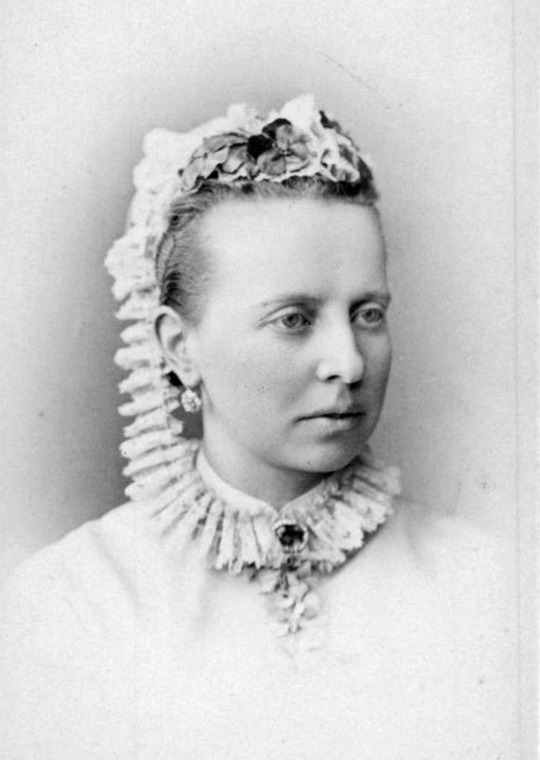

The Russian Imperial Family had hoped to reform the wayward Grand Duke through the marriage to the pious Alexandra. What they did was condemn Alexandra to hell. Although the first ten years of the marriage were quiet, and the couple had two children, soon Grand Duke Nicholas started giving signs of boredom with Alexandra’s continued and increasing interest in religion, charity and medicine. He established a second household with his Mistress, with whom he had 5 children. He wanted to marry his mistress and accused Alexandra of adultery with her confessor (doubtful) so that he could get a divorce. He also threw her out of the palace where they lived without her clothing or jewels.

Alexandra’s bad spell did not stop there. The Duchess had a serious carriage accident and was left with her legs and one arm paralyzed. She went to Italy to convalesce with her children. The Grand Duke followed her to Italy and took her children away. Nicholas and Peter practically raised each other, alone most of the time in their palace; Alexander II would not allow their mother to return to Russia. At one point, the Konstantinovichi contemplated taking at least Peter (whose health was always frail) to live with them.
When Alexander III came into power, he stripped Grand Duke Nicholas Nicholaevich (the elder, as he came to be known) of all his offices. Alexandra was able to return to Russia and settle in Kyiv. Eventually, she recovered the movement of her arm and legs and took holy orders. She worked as a nursing sister for the rest of her life. Alexandra remained close to her children, Grand Duke Nicholas Nikolaievich (Nicholasha) and Grand Duke Pyotr Nicholaevich.
Her husband continued to wait for Alexandra, who had multiple and serious health problems, to die so that he could marry his mistress. The death of his mistress before him unhinged him. Nicholas developed what seemed to be dementia and became increasingly disoriented and uncontrollable. His children had to seclude him in a house in Crimea with suitable staff to guard him until his death. He predeceased Alexandra by almost a decade. When his children went to put his state in order, they found he had squandered his fortune and their patrimony and had left them with almost insurmountable debts.
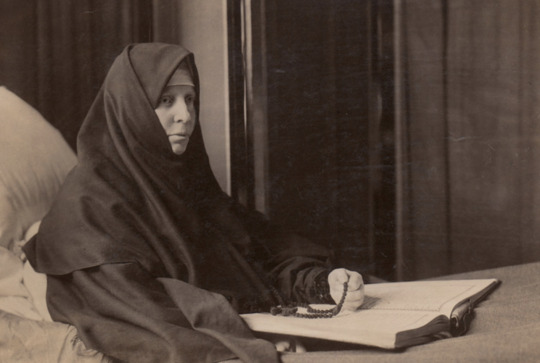

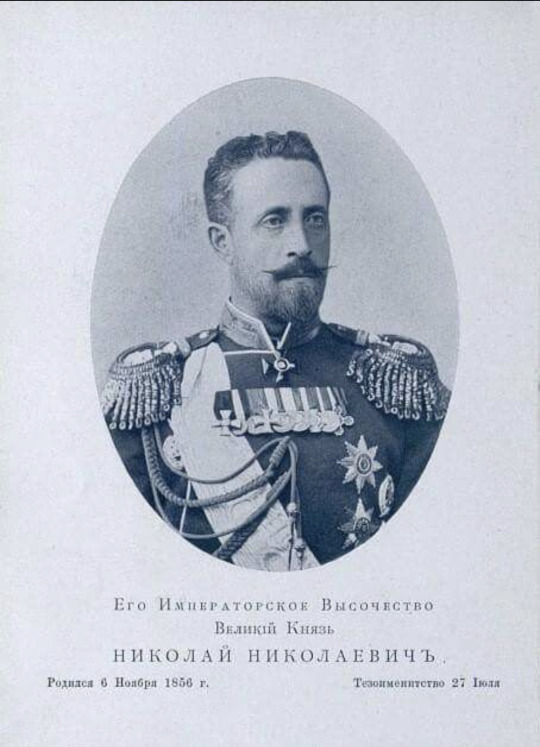

#russian history#imperial russia#romanov dynasty#Grand Duke Nicholas Nikolaievich the elder#Grand Duke Nicholas Nikolaievich#Nikolasha#Grand Duke Pyotr Nikolaeievich#Grand Duchess Alexandra Petrovna
22 notes
·
View notes
Text
My Kristanna Halloween/Fall Fics
The Grandfather Clock (T)
There's a demonic presence in the house Anna inherited from her parents, who died in unexplained circumstances. Determined to sell it and be rid of the burden, she enlists the help of her ex-husband Hans and Honeymaren's paranormal investigation team, but she finds herself relying on the local sheriff's expertise instead. (T)
Iduna's Apple (T)
Kristoff had been giving Anna baskets of his best apples for her Harvest Day pies for years, but he was always too shy to express his affection in any other way. Everything changed, though, when Anna got a goat named Sven with a taste for apples.
The Headless Horseman, a Chilling Tale (M)
One Halloween night, Anna finally left her violent and controlling husband Hans and fled through the dark hedges, which were said to be haunted by a headless horseman in search of blood and heads, to get to her sister Elsa. While the headless horseman was only a legend, Anna's cruel husband was real. Will the horrors of the forest be worse than than the husband she left behind?
The Jakku Lantern (E)
It’s Kristoff, his Mandalorian helmet, and Olaf the Pumpkin King, against Raggedy Anna and Elsa AKA Maleficent, in a pumpkin carving contest judged by Sandy Claws Sven. Will Mando get a happy ending, despite the helmet that just won't budge, in this alternate version of the charades scene from Frozen II?
Ginger Sweet Love (M)
Anna and Kristoff get a second chance to tell each other how they feel when Kristoff shows up unexpectedly at Anna’s Halloween/Friendsgiving party. Let's hope 17 years later isn't 17 years too late.
Seeing is Believing, Hearing is Deceiving (M)
Anna Oldenburg lives in a 19th century fantasy world of romance and ghosts and is dedicated to preserving the memories of the past, while her somewhat estranged sister Elsa Frost, an ice cream artist, does everything she can to focus on the here and now. Anna falls for Kristoff, the building conservator and maintenance technician at the Victorian mansion hotels owned by the Oldenburg family, but her over-protective father Agnarr keeps them apart. Their lives get turned upside down when Kristoff discovers a skeleton in the closet. Anna works with Kristoff to uncover the mystery of the skeleton, but she'll need her sister's help to learn the secrets of the past that are the keys to saving Elsa's son Olaf. [I have plans to rewrite this one but it keeps getting put off.]

18 notes
·
View notes
Text
RvB characters as equestrians!!
Church: Dressage snob 100%. Every single show him and his horse are getting massages. His horse gets chiro every few months or so. Man is decked out in Halter Ego with every color of the rainbow in Equestrian Stockholm saddle pads and jackets. Loves matchy matchy outfits but will deny it when anyone asks. Owns a flashy warmblood and will complain if a thoroughbred scores higher than him.
Tex: Eventers scare me a little so that’s what Tex is. She rides a batshit chestnut mare that will only listen to her. Absolutely loves the thrill of jumping. Probably refers to the mare as her dragon.
Tucker: Western. Probably owns a nice little bay quarter horse gelding. Loves loves loves dressing up all nice and flashy for western. Thinks that the chaps and cowboy hat makes him look hot. They do.
Caboose: He is the hardest one to decide. Maybe he’s got an Australian saddle and just does whatever? Whatever the discipline is him and his horse would be connected on a very deep level. Works really well with mares because he understands that with them you must ask, and not tell.
Wash: I might just be biased but I feel he would have been a big dressage rider when younger. At the very least has his bronze. As he got older he moved out of competition and focused more on trail riding and relaxing. I feel like he’s the type of guy to be like those horse girls you see on Instagram reels that buy sick horses from auctions/slaughter houses and rehabilitates them.
Kai: Speed Queen!! My girl is whipping around those barrels so fast you can barely see her. Definitely rides a paint mare. She’s always the flashiest rider there.
Sarge: Rodeo, specifically roping. Big quarter horse fan. Him and Church probably bitch at each other all the time about horse breeds.
Grif: My first instinct was western, but I imagine he’s probably strictly a trail rider. Doesn’t care for competition, just likes to amble around the forest with a bomb proof horse.
Simmons: Most horses take advantage of his lack of confidence so he’s pretty much an unofficial red team groom. Maybe leases an older gelding so he can trail ride with Grif.
Donut: Started out with western because he liked the attire but it was too slow for him. Kai got him into speed. Loves palominos.
Lopez: Western! Maybe a bronc rider?
Carolina: Absolutely hunter jumper. Owns a big Warmblood or Oldenburg or something along those lines. You almost never see her knock down a jump. Makes everything look effortless.
Doc: Jack of all trades. Has probably done a bunch of different disciplines and leased a bunch of different horses. Tells everyone he’s looking for his heart horse.
#sobbingspeaks#heads up I’m a dressage rider who’s only dabbled a little bit into western so this might be inaccurate#rvb#red vs blue#headcanons#horses
10 notes
·
View notes
Text


Source
I hate suburbs I hate isolationism I hate it here
(ID under cut)
[ ID: Screenshots from an academic essay in plain text reading:
"Oldenburg discusses the dramatic decrease in public space as the plight of America. “In their kind and number, there has been a marked decline in gathering places near enough to people’s homes to afford the easy access and familiar faces to a vital informal public life. The course of urban development in America is pushing the individual toward that line separating proud independence from pitiable isolation (Oldenburg 1989, xvi). Oldenburg’s sociological theory of third place preceded the takeover of social media and
smartphones, but even in the 1980s, he observes “America does not rank well on the dimension of her informal public life … her citizens are encouraged to find their relaxation, entertainment, companionship, even safety, almost entirely within the privacy of homes” (Oldenburg 1989, xvi – xvii). His desperation over Americans retreating to their first places and reducing social interaction is in keeping with our current retailer exodus where
chain stores and malls, the quintessential gathering place of the latter part of the 20th century, are shuttering daily.
Oldenburg attributes the increased isolation of Americans, in part, to a desire for convenience, a deemphasized informal public life, and reliance on self-help (Oldenburg 1989, 285–292). Busy, working Americans view third places as inconvenient because it takes effort and time to visit them, and their presence in society has lessened (Oldenburg 1989, 286–287). The health and fulfillment benefits of
third place have been abandoned, and Americans seek to solve their own emotional and mental troubles or turn to professionals in a formal setting. This decline in third places increases the urgency for libraries to accept the social responsibility of providing space in the public sphere. Libraries are still vulnerable to the isolation habits of the general public just like any third place, but the principles that libraries represent and the values they are capable of preserving, suspend the hasty fate to which franchise stores have fallen victim. The synergy for preserving libraries comes from history, core values, and a future sanctity of public.
We may not need third place association to build a town hall anymore, but we sorely need it to construct the infrastructures of human relationships. Ever since
the solidifying effect of World War II passed into history, Americans have been growing further apart from one another. Lifestyles are increasingly devoid of gathering places. To the extent of our affluence, we avoid public parks, public playgrounds, public schools, and public transportation (Oldenburg 1989, 2).
Following World War II, veterans returning home were able to obtain singlefamily dwellings in the suburbs with the privacy they desired at low cost (Oldenburg 2002, 4). There was a deemphasis on local pubs, and the suburban housing development represented retreating from public life rather than nurturing its shared spaces. In his book, Individualism and Public Life, Ralph Ketchum discusses the postwar trend of individualism and says “the suburb put people on their own in a way that contrasted sharply with traditional understandings of community” (Ketcham 1987, 9). The American flightpath was headed for private ownership and a concealed existence as opposed to the more collective focus of its predecessors. The bearings of a private life became associated with prosperity and well-being.
Simultaneously, corporations flourished in America post war (Oldenburg 2002, 4). Relative to this corporate occupation are Frank Webster’s words regarding the capitalist encouragement and subsequent deterrent of the public sphere: “the capitalist state came into being: as such its adherents increasingly turned their backs on an agitational and argumentative role and used the state – now dominated by capital – to further their own ends” (Webster 2014, 165). The American business model turned to privatization just as individuals retreated to a more private life"
End ID]
3 notes
·
View notes
Photo

Princess Charlotte Amalie of Denmark. After Peter Wichmann.
She was the daughter of King Frederick IV of Denmark and his wife, Louise of Mecklenburg-Güstrow.
In 1725, she was on the list of 99 princesses considered acceptable to marry Louis XV of France, but was removed from the list because the Kingdom of Denmark was an arch-enemy of Sweden, France's traditional ally, and such a marriage could dissolve the Franco-Swedish alliance.
#peter wichmann#Kongeriget Danmark#prinsesse af danmark#house of oldenburg#haus oldenburg#kingdom of denmark
6 notes
·
View notes
Text
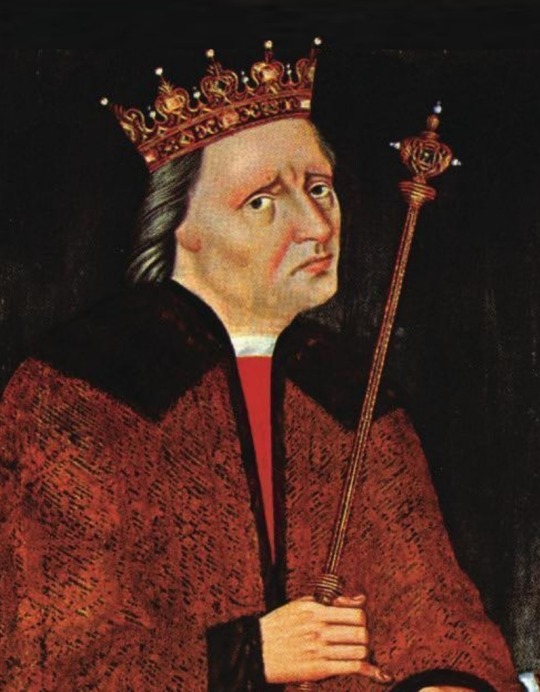

On 8th September 1468 King Christian I contracted the marriage of his only daughter Margaret Oldenburg, Princess of Denmark to James III.
The marriage ended up with The Northern Isles of Shetland and The Orkneys being ceded to Scotland.
After Norway was peaceably united with Denmark under King Christian I – his Oldenburg dynasty is still on the Danish throne – in 1450, he concentrated on building his empire in Scandinavia and seems to have had little time for his westernmost provinces of Orkney and Shetland. Christian also did not want any further warring with the Scots, and in 1468 a dynastic marriage was arranged between his 12-year-old daughter Margaret and James III – who had been on the throne since 1460 but who was still only 16 or 17. They married at The Palace of Holyrood House Abbey in 1469, a year after the signing of the Treaty of Copenhagen – sealing the friendship between Denmark/Norway and Scotland.
By that treaty, Margaret of Denmark’s dowry included the cancellation of debts allegedly owed by Scotland but most importantly King Christian offered 60,000 guilders or Rhenish Florins to James, with a mortgage secured on Orkney and Shetland. The first payment was due immediately after the marriage, but Christian was short of currency and the payment was not made. It seems he really did want shot of the islands ordered his subjects there to pay their taxes to the King of Scots until he could pay the redemption money. He never did pay up and effectively handed over the islands to Scotland.
James III also made it clear that he wanted the islands, and in 1470 he "persuaded" the Earl of Orkney, William Sinclair, to sign over his earldom to the king himself in return for some lands in Fife that included Ravenscraig Castle.
Now as Earl of Orkney – King Christian did not object – all that remained for James to do was to get the Scottish Parliament to formalise the annexation, and that finally happened in February 550 years ago.
The Shetland Museum and Archives website described what happened next:
“[James] promised that they shouldn’t be given away in time to come to anyone, except one of the king’s legitimate sons. His plan was that the islands should be governed by the Scottish crown, and administered on the king’s behalf by his own governors and tax-collectors – while leaving open the possibility that they might be gifted to a respectable nobleman sometime in the future. So in August the same year James appointed the bishop of Orkney, Andrew Pictoris, as his agent in Orkney and Shetland. King Christian didn’t complain.
“And something else happened, again in 1472, that was equally far-reaching. Six months after the annexation Pope Sixtus VI created an archbishopric in Scotland, based at St Andrews. He attached the bishopric of Orkney to it. At a stroke the ecclesiastical affairs of Orkney and Shetland had been taken over by the church in Scotland, just as their royal administration had been.”
Many nobles in Denmark and Norway were upset at King Christian for letting Orkney and Shetland go, and his successors King Hans and King Christian II were put under pressure to renounce the Treaty and take possession of the islands once again. They found excuses not to do so with Christian II being particularly hypocritical as he wrote to the islanders in 1514 that they were rightly under the crown of Norway despite being “pawned” to Scotland. It wasn’t until the 1660s that Denmark stopped claiming the islands.
For many decades Orkney and Shetland kept their own distinctly Norse polity, the islands have been part of Scotland since February 472, but the foundations for that were laid on this day in 1468.
The first pic is Christian I.
9 notes
·
View notes
Photo
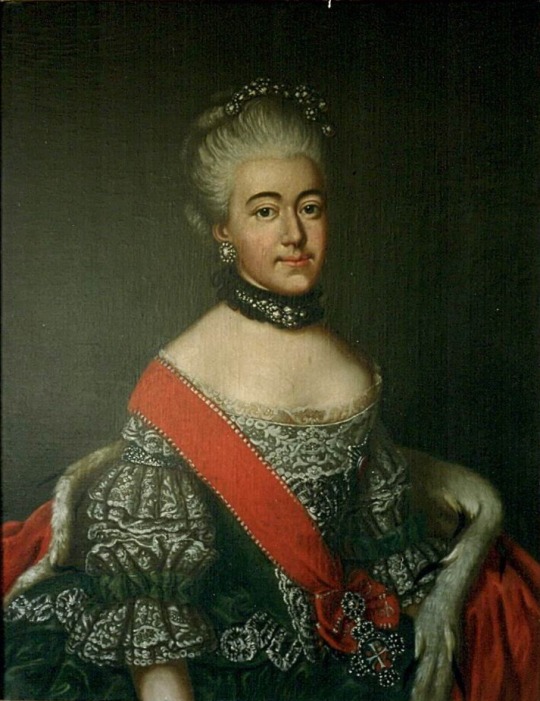
Louise Albertine, Princess of Anhalt-Bernburg (21 July 1748 – 2 March 1769) was a member of the Danish royal family and the consort of Frederick Albert, Prince of Anhalt-Bernburg.
#Augusta of Schleswig-Holstein-Sonderburg-Glücksburg#House Oldenburg#XVIII century#people#portrait#paintings#art#arte
8 notes
·
View notes
Text
Notes on oak
Oak enjoyed a lot of reverence among the pre-Christian Slavs, especially the larger and more ancient trees. The main sanctuary of Vagrians (a Western Slavic tribe) was a sacred grove of oaks near Starigrad/Oldenburg, devoted to a little known deity Prove/Prone, which served as a place of worship and legal proceedings. A giant oak tree grew on the island of Saint Gregory (Khortycia), under which, according to Constantine Porphyrogenitus, the merchants of Rus’ made sacrifices. Another giant oak grew next to the temple of Triglav in Stettin. Traces of yet another have been found on the top of the Krakus Mound. Saxo Grammaticus claimed the image of seven-headed god of the Rani Rugiaevit was carved out of oak wood. Oak is of course also associated with the Thunderer, in Slavic context usually understood to be Perun. Countless other mentions of oak trees connected to Slavic cults can be found.
In many places people believed that harming or destroying those great ancient oaks would bring misfortune upon their community. In Kalisz region plagues were attributed to cutting down of a sacred oak (frequently a tree on which a shrine was hung). Near Nowy Targ legend held that whoever breaks a branch of great oak in Niedzica will surely die.
Oak is viewed as a quintessentially masculine tree, frequently paired with feminine linden. Oak or linden trees would often be planted by the house, to protect it and it’s inhabitants from misfortune. Both were also viewed as particularly well suited for religious purposes.
Characterized by hard and resistent wood the oak became a symbol of physical strength and invincibility as well as royal power and life. Poles used to bake bread on oak leaves, believing that whoever eats it will have oaken strength. Oak trees were used in healing rituals in which the illness could be passed onto the tree and defeated by it. In many folk tales oak was associated with raising people from the dead.
The connection between oak and thunder is obvious and apparent. Oak branches could be stuck into the thatched roofs or walls of the houses to keep the thunder away from them and prevent subsequent fires. For the same reason oak wood would be burned during thunderstorms.
The wood and leaves of an oak are a great remedy against witchcraft. Fumigations of smoke from oak leaves are believed to work well against devilish powers and cleanse air from illenesses. Oak stakes (along those made of hawthorn and aspen) were considered an excellent weapon for combating vampires, and they were sometimes pre-emptively driven into graves of hanged and drowned men, so that they couldn’t rise again and harm the community (Hrubieszów).
On the other hand oak wasn’t seen as completely benign. Witches gathered for Sabbath not only on Bald Mountains but also in oak groves. They had the ability to curse a household by sticking an oak branch into one of the house walls and ordering the family to wither as the branch itself withers. Lone oak trees growing in the fields of by the road could be seen as inhabited by the penitent spirit of a dead sinner.
Overall every oak could be seen as a dwelling place for spirits - good or bad.
In many regions of Poland, from Greater Poland to Eastern Borderlands acorns were used in fortune telling to predict the success of the next harvest, the circumstances of the coming year and potential misfortunes that might befall the community.
oak bark was used to produce black dye as well as to paint pisanki dark brown,
it was also used in tanning of animal hides,
in Lesser Poland oak would was the preferred wood for house foundations
due to it’s hardness oak was in particular associated with teeth diseases and used in curing them
Sources: Sources of Slavic Pre-Christian Religion by Juan Antonio Àlvarez-Pedrosa, Slavonic Pagan Sanctuaries by Leszek Paweł Słupecki, Rośliny w wierzeniach i zwyczajach ludowych. Słownik Adama Fischera by Kujawska et. al, Obraz dębu i lipy w literaturze polskiej i litewskiej XIX - XX wieku. Studium porównawcze. by Stanisława Gajewska, The symbolic meaning of plants grown in a traditional homestead by Małgorzata Dróżdż-Szczybura, Społeczeństwo wobec przyrody – związki przyrody z człowiekiem w zwyczajach ludowych w Polsce i wybranych krajach Europy by Joanna Szmuc
140 notes
·
View notes